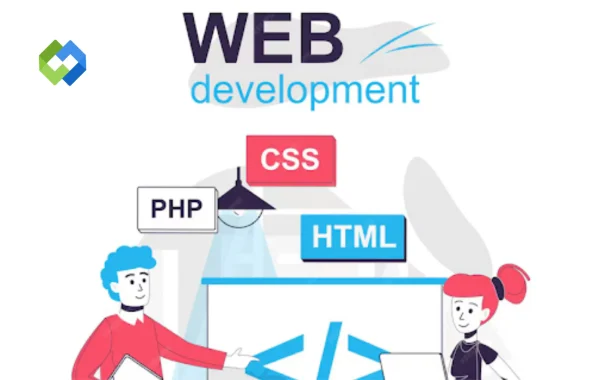For any company that constructs the web, adopting Jamstack enables companies to create frictionless user experiences and improve performance. Why then is Jamstack the future of web development? In this article we will help you to find out its benefits and why it is gaining popularity among developers and companies in no time.
Table of Contents
Table of Contents
Understanding Jamstack
Jamstack is a new web development paradigm for JavaScript, APIs, and Markup. Jamstack applications are pre-built and serve as static files and APIs for dynamic behavior. In other words, it is faster to load, more secure, and improves the developer experience.
With decoupling of the frontend from the backend, Jamstack enables developers to build interactive web applications that are free from backend complexity. Instead of employing a monolithic CMS server, content and services are dynamically loaded by APIs, and the model is ultraflexible and scalable. This approach is transforming web development services, allowing businesses to create high-performing, secure, and scalable websites without the limitations of traditional development methods.
The Shift from Conventional Web Development to Jamstack
The classical web development relies on server-side rendering where the dynamic page is built over and over and over again for each request. Even as great as this may sound, it actually equates to an infinite performance degradation, security vulnerabilities, and a difficult set of infrastructure management.
Jamstack, on the other hand, leverages pre-rendered static files in a manner where content is rendered for customers in real-time. The process avoids the drawbacks of traditional methods through server-side computation, thereby making it the best method for contemporary web development services. Secondly, because Jamstack applications are based on APIs, developers enjoy the benefit of using best-of-breed tools without committing themselves to using a single technology stack.
Why Jamstack Is Becoming Popular
There are certain intrinsic reasons driving mass adoption of Jamstack in modern web development:
Improved Performance and Speed
Jamstack sites are faster than conventional web applications. Since pages are pre-rendered in advance and served via Content Delivery Networks (CDNs), people view pages nearly in real-time. Compared to server-side applications where each request translates to backend processing, Jamstack sites avoid such delays by serving pre-built files. This provides high-performing user interactions as well as better Search Engine Optimization rankings.
Enhanced Security
Security is a highly emerging topic in web development, and Jamstack can effectively solve the issue. Conventional web applications are likely to expose themselves to database connection, server-side computation, and authentication risks. Jamstack avoids such risks by separating the backend and frontend. With no direct server or database access, conventional risks such as SQL injection and DDoS attacks are minimized.
Scalability and Cost Efficiency
Scaling traditional web applications involves capital investment in additional server space, which is costly and time-consuming. Jamstack makes it easy for companies to scale with CDNs. Precompiled static files cached globally lead to sites handling traffic spikes in high traffic without additional backend assistance. Jamstack is a cost-efficient approach for companies to optimize their web application development process.
The Role of APIs in Jamstack Development
APIs form the core ground of Jamstack development as the unifying platform between static front-end applications and dynamic back-end functionality. APIs simplify integration with third-party services for handling authentication or content management, payment or database querying with ease.
By adopting the API-first development philosophy, developers can build modular applications with the best possible services picked for a purpose without having to endure an incredibly inefficient and bloaty frontend.
Partnering with a digital transformation company allows businesses to strategically integrate APIs that suit their ecosystem, improving connectivity across services like CMS, authentication, and payments.
Shared API services utilized in Jamstack development are:
- Headless CMS (Contentful, Strapi, Sanity)
- Authentication services (Auth0, Firebase Authentication)
- Payment gateways (Stripe, PayPal)
- Search and indexing services (Algolia, Elasticsearch)
APIs enable businesses to realize greater flexibility in their web application development services and less dependence on monolithic backend systems. The business can choose the ideal API based on their project needs with the help of a web development company.
How Jamstack Helps Businesses
Enhanced Developer Experience
Jamstack supports a seamless and efficient development process. Since the architecture is frontend, apps are simple to develop using newer JavaScript libraries like React, Vue.js, and Next.js without concerning yourself with backend matters. Continuous integration and deployment pipelines ensure it’s simple to push updates, hence the development process becomes efficient and fast.
Omnichannel Content Delivery
As digital experiences continue to evolve, businesses need to deliver content seamlessly across multiple platforms. Jamstack’s architecture, combined with a headless CMS, ensures that content can be shared across websites, mobile apps, IoT devices, and more. This approach allows businesses to create personalized, interactive experiences that engage users on any device or platform. To fully unlock this potential, many organizations collaborate with a trusted Mobile app development company that can align Jamstack capabilities with their broader product and content strategy.
SEO Benefits
SEO plays a crucial part in web discoverability, and Jamstack makes it easier for SEO capabilities through numerous ways. Page loading improves, code gets cleaner to maintain, and pre-renders assist with more enhanced search engine rankings. For server-side rendering-based dynamic web pages, web pages are only crawlable on deployment by the search engines. Therefore, websites built with Jamstack can gain better discoverability and organic traffic.
Jamstack vs Traditional Web Development: An Evaluative Survey
| Feature | Classic Web Development | Jamstack |
| Performance | Slow, as it involves server-side rendering | Better performance with pre-rendered pages and CDNs |
| Security | Vulnerable to server and database attacks | More secure with reduced backend exposure |
| Scalability | Requires more server resources | Scales easily with global CDNs |
| Developer Flexibility | Restrictive monolithic frameworks | Loose decoupling for API integration |
| Cost Efficiency | Higher maintenance and infrastructure costs | Lower costs with static hosting |
Future Trends of Jamstack Development
Jamstack is capable of changing web application development, and the future is soon going to transform in its direction. A preview of some milestone developments is as follows:
- Serverless Functions: Serverless computing is becoming the limelight in Jamstack applications, enabling developers to write backend logic without having to manage servers, creating scalable and flexible solutions.
- AI-Powered Web Experiences: Artificial Intelligence will further power user-focused web experiences in Jamstack applications through the usage of machine learning and data science to provide natural and personalized interactions.
- Progressive Web Apps (PWAs): Jamstack is an ideal methodology for creating PWAs—combining speed and reliability with user interaction to provide fast-loading, interactive, and offline-capable web apps.
- Headless eCommerce: As its extensible and component-driven architecture, Jamstack is the go-to platform for headless eCommerce today that allows businesses to build highly responsive, optimized, and personalized web shopping experiences.
- Blockchain and Decentralized Web: Blockchain will smoothly be combined with Jamstack to develop decentralized, secure applications without privacy, trust, and peer-to-peer communication hurdles.
In the coming years, Jamstack will flourish and take web development services to new heights of innovation. Its capacity to combine the most cutting-edge technologies such as AI, serverless architecture, PWAs, and blockchain makes it a revolutionary piece of dynamic and visionary apps.
Conclusion
Jamstack is revolutionizing the web development environment in this modern era with its quicker, safer, and adaptive system than the traditional frameworks. With API-first strategy, pre-rendering, and leveraging third-party services with a sweat drop, Jamstack will be the next generation of web development services tomorrow. While businesses are looking for better performance, security, and cost-effectiveness, embracing Jamstack makes them torch-bearers of the evolving digital universe.














